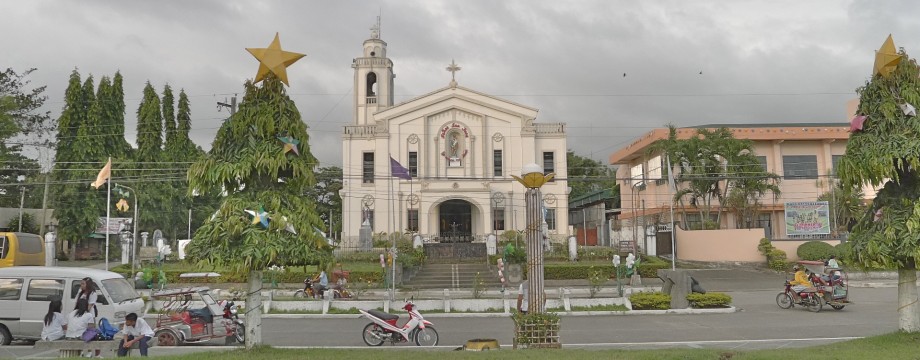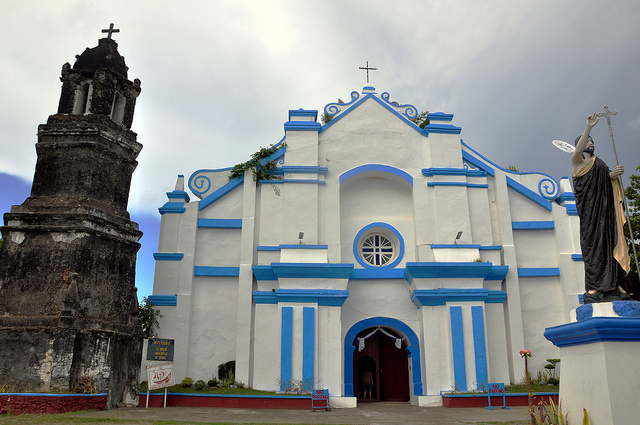The Church of Sarrat:
About the Church:
Sta. Monica Parish Church, commonly known as the Sarrat Church, is a Catholic parish church in the poblacion (Brgy. San Leandro) of the town of Sarrat, Ilocos Norte in the Philippines, about 7 kilometers (4.3 mi) east of Laoag City, the capital of the province. It was built in 1779 and was originally known as San Miguel Church. The Sta. Monica Church complex includes the convent connected to the church by an elevated three-level brick stairway.
The parish church of Sta. Monica is renowned as the largest church in the whole Ilocos Norte province, most especially the length of the nave. In June 1983, the church was the setting for the grand wedding of Gregorio Araneta and Irene Marcos, the daughter of then President Marcos.
Construction of the Santa Monica Church was began in 1779 and took 10 years to construct the whole complex. Within the church complex is the convent that was built prior to the church in 1769. Known as Casa del Palacio Real, the convent was originally used as a chapel prior to the completion of the church and the bell tower. It was later used as the Presidencia Municipal.
A devastating earthquake hit the province of Ilocos Norte on August 17, 1983, which recorded a magnitude of 5.3 (MI) on the Richter scale and an intensity 7 on the Rossi-Forel scale. The tremor sustained a major structural damage on the church’s facade as well as toppling down the bell tower.
The church is made from red bricks built in Earthquake Baroque and Neoclassical architecture. Inside the sanctuary, the ceiling is a magnificent framework of wooden roof trusses, which number to around 480 logs of hardwood molave, 75% of which dates back to the 18th century.
With its rich heritage and intricate details of architecture, coupled with the other sets of criteria mandated by the National Museum Act of 1998, the Sta. Monica Church Complex was added to the list of Important Cultural Property of the Philippines. The members of the deciding panel included Architect Augusto F. Villalon, Fr. Milan Ted D. Torralba, Ms. Anna Maria L. Harper, Fr. Rene B. Javellana and Mr. Cecilio G. Salcedo. Unveiling of the Important Cultural Property marker was held on September 27, 2009 by the National Museum director and was witnessed by the local government officials.
Other Pictures of the Church:
- Church of Sarrat






















































